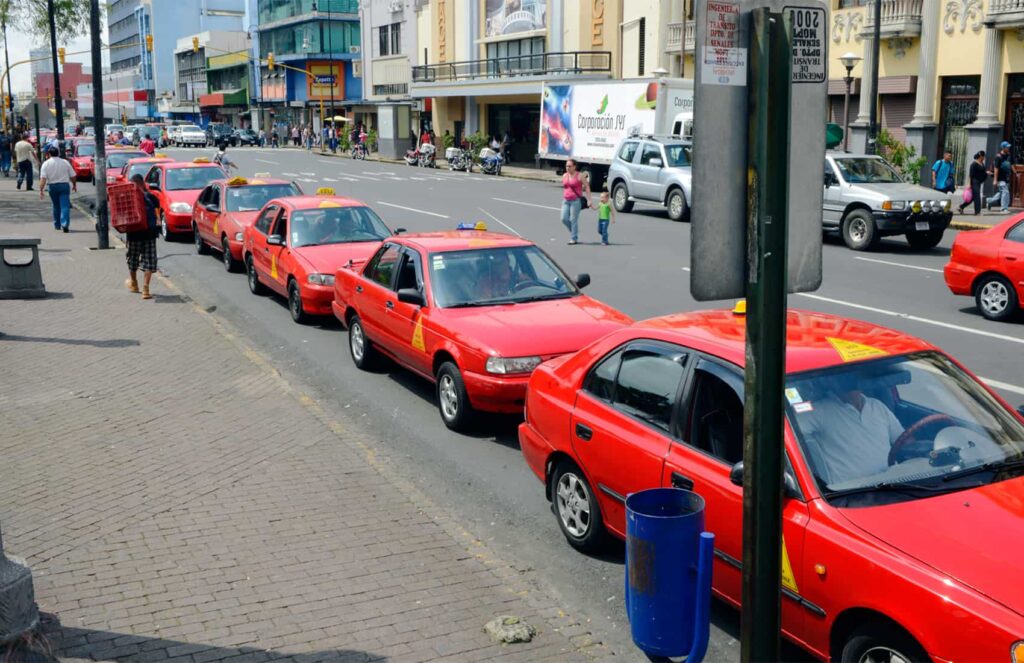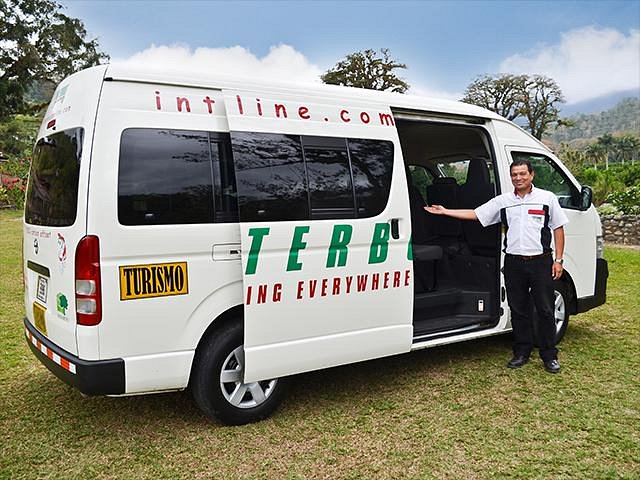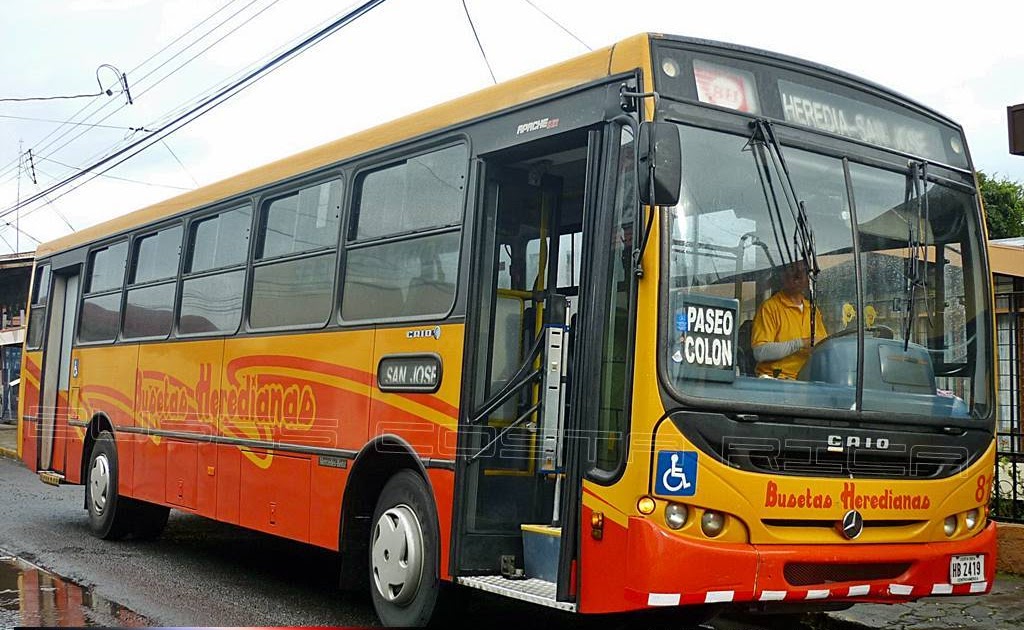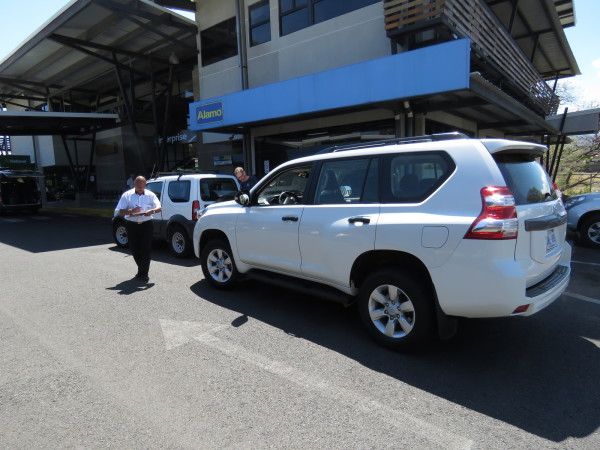One of the challenges facing travelers when they get to a new country is figuring out how to get around. There are a number of options depending on your budget, sense of adventure and desire for comfort. Ranging from public bus, to renting a car, there are a number of different strategies for each mode of transportation. Below is a handy guide for figuring out the best way to get from point A to point B.
Uber
By far the most convenient and familiar transportation option is Uber. Uber is available throughout the country and compared to the price of everything else in Costa Rica is surprisingly affordable. The recommendation algorithm is pretty smart and despite the fact that Costa Rica lacks conventional numbered addresses, Uber can do a good job of finding businesses or anything with an established name on Google maps.

For individual homes the best option is to place a pin. In the app the easiest way to do this is to scroll to the bottom and select ‘set location on a map.’ You can then move the map around and drop a pin directly on where you want to go. You can also take advantage of the ‘saved places’ option and get the app to remember where you frequently go. A good idea is to utilize the location ability. Uber knows where you are if you have the location turned on. When you get to your homestay, I recommend you open the map and drop a pin on your location and save it in your saved places.
Uber is great for short trips and it’s usually pretty easy to get a ride anywhere around town in Heredia or into San Jose. It can be more challenging to get a ride back to Heredia from San Jose, especially late at night, but it’s usually manageable, you’ll just have to wait for longer.
It is possible to get Ubers booked for longer trips across the country but this can be quite pricey. Another insider tip (especially if you have some command of Spanish) is to ask Uber drivers for their number and ask if they do certain trips. Often this can be a better deal for both you and them, especially if you pay them in cash. That way you can just call them up or text them and book a ride directly.
Additionally Uber can be strategically used in tandem with buses. For example, taking an Uber directly to your specific bus terminal in San Jose (more on this later). Or you could take a bus to another city and use Uber to connect to your specific destination.
FYI: Uber is in sort of a legal gray area in Costa Rica and sometimes drivers may ask you to sit in the front.
Taxi
Old school taxis still exist in Costa Rica and are another option. They are red with a yellow triangle on the side. You can easily hail them in the street or call a number.  Generally they still use the meter, so you do run the risk of the driver going the long way to jack up the price. You’ll need to know some Spanish to tell the driver where you want to go, which can be difficult if you’re trying to go home, but can also be good practice. Like with Uber, you can often get a taxi driver’s number if you like them and call them when you need a ride. Many local people have a preferred taxi driver. Again this does require some basic Spanish ability.
Generally they still use the meter, so you do run the risk of the driver going the long way to jack up the price. You’ll need to know some Spanish to tell the driver where you want to go, which can be difficult if you’re trying to go home, but can also be good practice. Like with Uber, you can often get a taxi driver’s number if you like them and call them when you need a ride. Many local people have a preferred taxi driver. Again this does require some basic Spanish ability.
There are also pirate taxis, which are just regular guys who will drive you around for a cost. This is not recommended unless you have a high level of Spanish and know exactly where you want to go.
Private Shuttle
Shared or private shuttles are the norm for intercity travel across much of Central America. While the bus system in Costa Rica is fairly well connected and affordable, shuttle service can be useful for traveling to remote areas, or for traveling in greater comfort or with more convenience.  Shuttles are usually 12-15 passenger vans or minibuses that pick up guests directly at their hotels in one city and drop them off at their hotels in another. You generally register your hotel on the company’s website and you’ll be given a pick up time. Be warned, the pickup times are more of a suggestion. This is because every person in the same city is given the same pickup time. So you’ll need to be ready early and expect the shuttle to arrive late. Shuttles are a convenient option for weekend trips to other cities a couple hours away. They are faster and more comfortable than the public bus, but are more expensive.
Shuttles are usually 12-15 passenger vans or minibuses that pick up guests directly at their hotels in one city and drop them off at their hotels in another. You generally register your hotel on the company’s website and you’ll be given a pick up time. Be warned, the pickup times are more of a suggestion. This is because every person in the same city is given the same pickup time. So you’ll need to be ready early and expect the shuttle to arrive late. Shuttles are a convenient option for weekend trips to other cities a couple hours away. They are faster and more comfortable than the public bus, but are more expensive.
Public Bus
Costa Rica has an expansive bus system and figuring it out can be a bit daunting at first. For shorter buses within San Jose and the central valley, fares are generally less than $1. You can see the main stops of the bus pasted to the front window of the bus. Sometimes these are big enough to read from far away and other times you’ll need to get closer. Some buses have route numbers, but you’ll have better luck figuring which city or neighborhood you are trying to go to and looking for its name in the front window of the bus. There are often different buses overlapping the same routes.
 If this sounds confusing, it can be at first. There’s quite a few apps out there that can help you navigate unfamiliar public transit routes and the best of these is Moovit. Like Uber, Moovit has a strong suggestion algorithm and can usually find businesses or other places with names on Google Maps. It also has the ability to calculate directions based on your location. The app will show you which bus to take and exactly where on the map all the bus stops are. It will also show you where you need to transfer buses if necessary and how far you’ll need to walk to do so. You’ll be able to see everything on the map and follow your location with a little blue dot. Moovit is programmed to minimize the amount you walk, so cross reference with Google maps to see if the shorter legs of your trip are more easily walked.
If this sounds confusing, it can be at first. There’s quite a few apps out there that can help you navigate unfamiliar public transit routes and the best of these is Moovit. Like Uber, Moovit has a strong suggestion algorithm and can usually find businesses or other places with names on Google Maps. It also has the ability to calculate directions based on your location. The app will show you which bus to take and exactly where on the map all the bus stops are. It will also show you where you need to transfer buses if necessary and how far you’ll need to walk to do so. You’ll be able to see everything on the map and follow your location with a little blue dot. Moovit is programmed to minimize the amount you walk, so cross reference with Google maps to see if the shorter legs of your trip are more easily walked.
For intercity buses, I recommend another app Rome2Rio. This app will show you the companies that operate a given route. Usually, there are different terminals and companies for each route. This can be difficult to navigate at first, but Rome2Rio will also show you the exact location of the station on the map. Moovit can be used for intercity buses, but in my experience sometimes it overlooks some direct routes between larger cities. These can be cross referenced via Google search. To find the best route check with both apps. Some companies have online ticket buying options, but many don’t. It is best to Google the specific journey you want to make, identify the company that operates this route and go to their website. Often you can head to the station or bus stop the day of and buy the ticket there. Just try to get there early and remember, you can’t be in a hurry in this country. In general if you are going farther than the central valley you will need to transit through San Jose.
Getting to San Jose is easy. To find the buses walk 11 blocks south (from Tico Lingo) to Parque Juan de Jesus Flores and turn left. A couple blocks down this road, you will see a row of yellow and red buses called Busetas Heredianas (click this link for the exact location), these will take you into San Jose. Alternatively you can take an Uber to the exact spot in San Jose you want to go. Just make sure if it’s a bus station, ensure it is the station that matches the company you are using. Most of the terminals are reasonably close to each other. If you need help, just ask, Costa Ricans are friendly and will often help you even if you don’t speak Spanish.
Rent a Car
Having a car makes it much easier to get around the country. Costa Rican traffic can be challenging in the city, but much of the countryside features well maintained and well connected roads between cities and if you’re cautious it’s a safe and convenient option for controlling your own travel timetable.  In rural areas roads can be a bit suspect, but it’s not unmanageable with the right vehicle. Many people choose to rent an SUV or a vehicle with 4-wheel drive. Sedans are cheaper, but may have a little more trouble with rough terrain.
In rural areas roads can be a bit suspect, but it’s not unmanageable with the right vehicle. Many people choose to rent an SUV or a vehicle with 4-wheel drive. Sedans are cheaper, but may have a little more trouble with rough terrain.
With a North American or European driver’s licenses it’s possible to rent a car without an international license. You have to be 21 years old to rent a car, but this can vary depending on the company. There are many recognizable international chains as well as smaller Costa Rican Companies. There are numerous offices at the airport and in San Jose.
Safe Travels!



